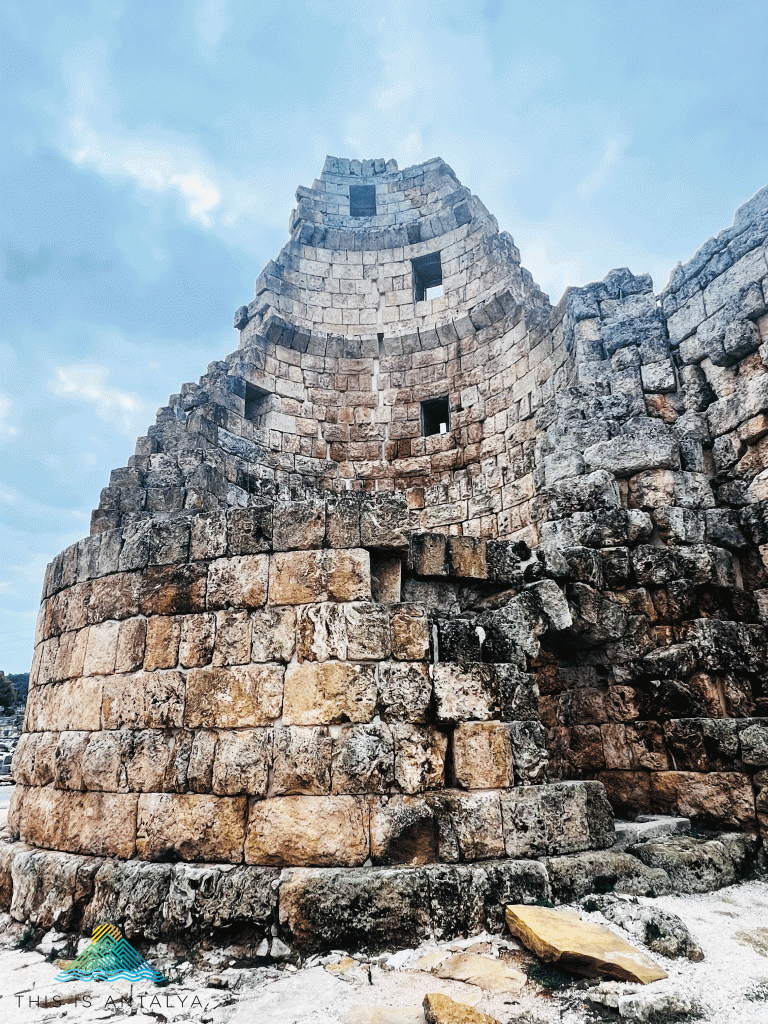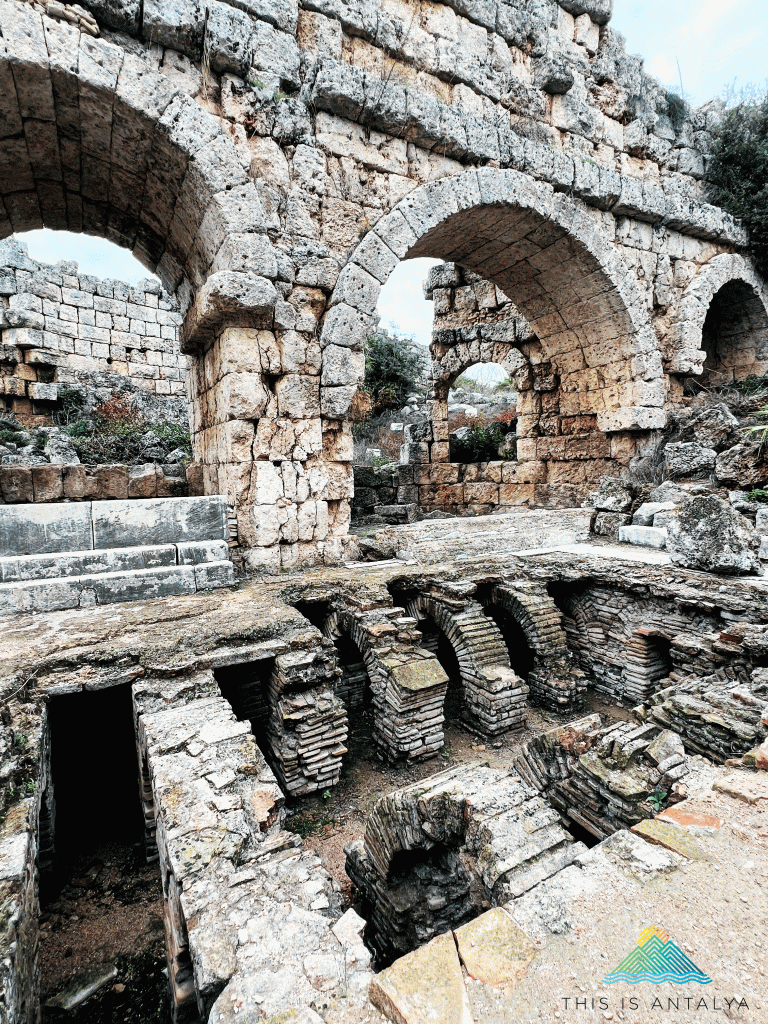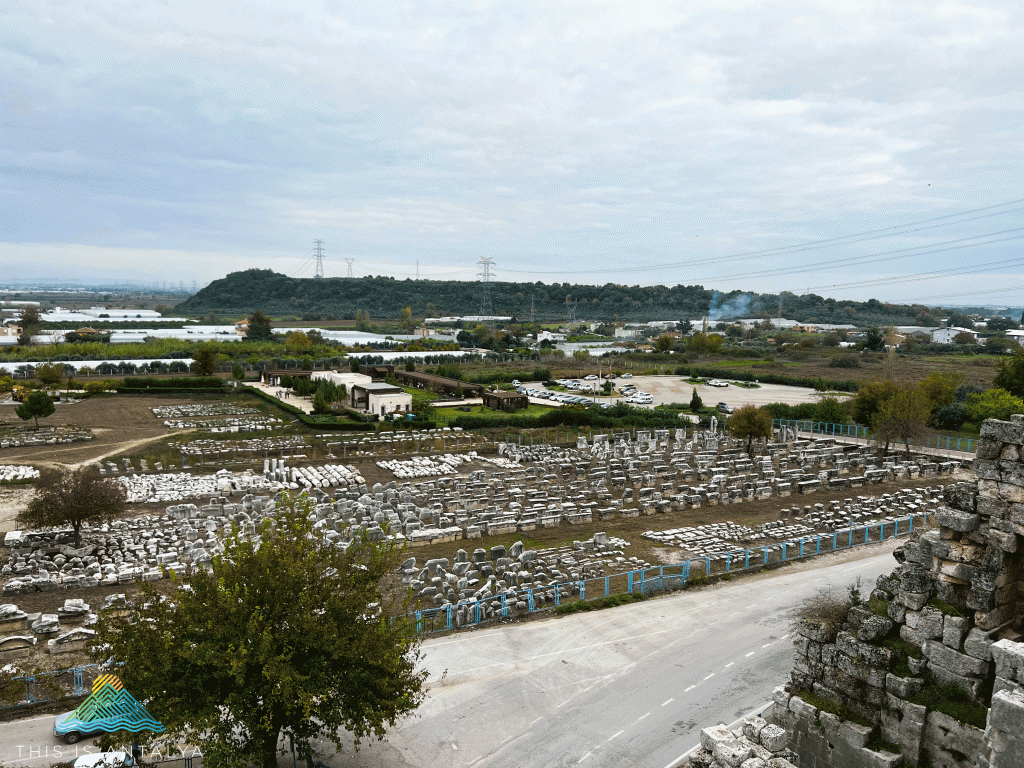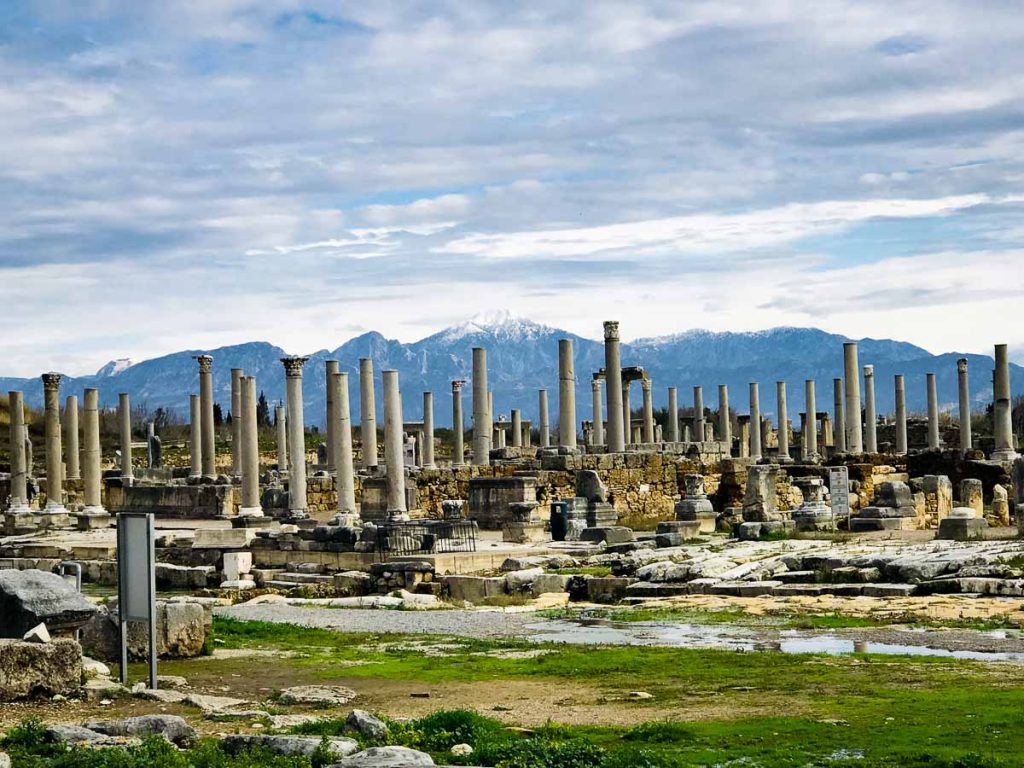Located not far past the Antalya Airport, the ancient city of Perge is a fascinating place for both history lovers and families with children who love to explore. We have been to so many ancient ruins all over Turkey that it has become difficult to count them all, but we can honestly say Perge continues to be one of our favorites. Read on to learn why.
History of Perge
The known history of Perge dates back to the Early Bronze Age, based off of ceramic pieces that have been unearthed at the acropolis site. (For non-history buffs, the Early Bronze Age was from 3500 to 2000 BC!! That is OLD!) In the Late Bronze Age (1600 -1200 BC) Hittite writings referred to the city as “Parha.” It wasn’t until much later in the Hellenistic Period (323 – 32 BC) that Perge – which means “hill” in Luvian – grew into a thriving city. Located in a fertile area, Perge did well because its hill position was easily defendable and it was a good distance from the sea. A nearby river gave access to the sea and made it a significant trading post. Wealth from trading allowed patronage to their city goddess, Artemis, to grow. According to ancient writings by Strabo, a temple with a huge gold statue of Artemis was constructed on a hill outside of town, but no proof of this structure has been found. It is during this time frame that the two towers being restored near the much later constructed Roman city gates and entrance to the city, were built.
Perge’s “golden age” took place during the Roman Empire rule (32BC -476 AD). Particularly during the 1st and 2nd century “Pax Romana” (Roman Peace) the city benefited from the peace and money this era provided and grew dramatically. Some of the city’s most important public buildings were built in this time, including the theater, stadium, city gate, agora, and gymnasium. Incredible remains of most of these structures can still be seen today. It was also during this time that baths, water channels running under the Roman Road, and monumental fountains were built, creating a magnificent city.
Perge or Perga played a significant role in the spread of Christianity in the region in the 1st century. The New Testament book of Acts chapter 14 details the Apostle Paul’s visits to Perga around 46 AD. It is the starting point for Saint Paul’s Road, which he used on his multiple journeys through Anatolia sharing the news of Christ. Saint Paul’s Road heads north from Perge and ends at Pisidian Antioch, just north of Eğirdir in Isparta. As Christianity spread, large basilicas were built in the city during the 4th and 5th centuries. Those ruins can also still be seen today.
Perge’s final phase as an inhabited city was during the Byzantine Empire when it began to decline in influence and affluence. After the river to the sea began to dry up and stop trade, the population declined. Then, in the 7th century, pirate attacks forced most remaining citizens to move west to Antalya. Years of earthquakes ruined what remained and subsequent flooding caused dirt and earth to layer over the ruins.
In the early 20th century, local residents began using ruin remnants as building materials until the government started official excavations in the city in 1946.

What can you see there?
Perge is included in the UNESCO World Heritage tentative list largely because of the number of ancient artifacts and sculptures that have been uncovered there and also because of the huge amount of the city that has survived the centuries. Unlike some of the other ruins in the area, a vast amount of work has been done in Perge to restore and rebuild the ancient structures. There are multiple signs and maps that help visitors understand what you are seeing and give you a glimpse into what the city might have looked like during its Roman years.
Inside Perge you will find a fairly intact stadium, Roman and Hellenistic gates, Roman baths, houses, basilicas, a gymnasium, an agora, and various other ruins of the city. Don’t miss the bath house to the west of the city towers where the floors are gone but you can see how they built heated pools underneath to warm the rooms (see picture below).

Because it is more restored and protected than some other ancient sites, there are not as many random rocks scattered about for the kids to climb, but there are enough to keep them happy. Young adventurers will also enjoy running around the stadium, walking up the hill to the Acropolis to explore the bumpy field, and roaming the ancient colonnaded streets.
Before you leave, be sure to check out the 15,000-seat theatre just past the stadium outside of the fenced in area. If you climb to the top of the theatre and look over toward the other ruins, you can see from above the thousands of pieces of random rocks and remnants that have been collected, categorized and laid out.

Insider Tips
- There is a snack bar and gift shop just inside with a few reasonably priced snacks, drinks, and ice cream (in the summer), but once you pass the entrance there is no place to purchase water or food. So, bring a water bottle for hot summer days.
- Apply sunscreen as you will find more sunshine than shade.
- Stop at the clean restrooms past the entrance, because you won’t find more of those farther into the ruins.
- Expect street dogs and cats to be hanging around. They are harmless and usually quite friendly (and hungry).
- Don’t plan on using a stroller on your tour of the ancient city; instead utilize a baby wrap or carrier.
- Lest you be surprised by your children begging you for a bracelet or toy when you leave, be aware that as you head back to the parking lot you have to walk through a mini pazar full of people selling souvenirs and gifts.
- There is a ticket window at the theatre, as well as the main entrance to the city. You just need to purchase one ticket to enter both the theatre and the main ruins.
- To make your history lesson complete after exploring the streets of Perge, you might want to visit the Antalya Archaeological Museum in the city center to see the extensive collection of statues, sculptures, and sarcophagi recovered from the site.
- If you are hungry and want to experience a local favorite, be sure to check out Meşhur Aksu Şimsek Köfteci İsa. Their köfte and piyaz are delicious, and the service is friendly and quick.
How to get there
Located about 30 minutes from city center, Perge is relatively easy to find. You can drive your own car or take a taxi. There is a large parking lot on site (but there is a small fee to park). If you want to go mostly by public transportation, you can take the blue tram headed toward Expo to the Aksu stop and then take a short taxi ride from there.
Location: Barbaros, Perge Yolu, 07112 Aksu/Antalya
Telephone: 0242 238 56 88
Hours: 1 April – 31 October: 8:00 – 19:00 Daily, 1 November – March 31: 8:30 – 17:30 Daily
(Entrance closes 30 minutes before site)
Entrance Fee: Check website for current prices



4 Comments. Leave new
[…] Perge: 60TL […]
[…] Perge: 200TL […]
[…] of ancient cities to visit in the Antalya region. With the more popular options like Aspendos, Perge, and Termessos, it is probable that you haven’t even heard of Lyrboton. With that in mind, this […]
[…] in the nearby Karain Cave, an extensive collection of sculptures from the ancient city of Perge as well as artifacts from a more recent era from St. Nicholas […]